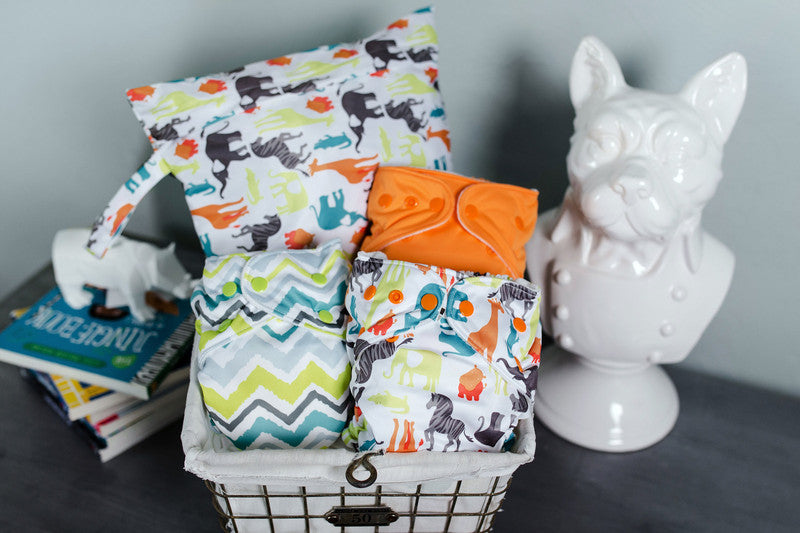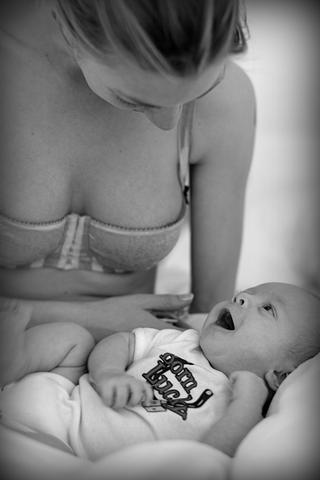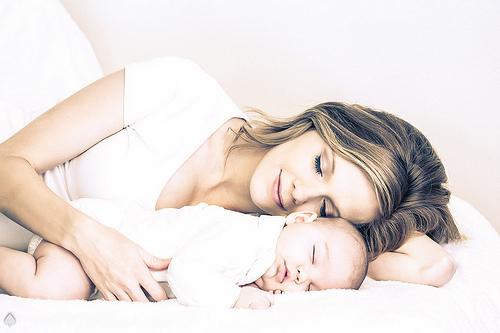It doesn't matter whether you just started cloth diapering, or you're a CDing wizard, there are some fairly common cloth diapering mistakes that even the most seasoned user can make. Below, we'll look at some of the most common mistakes, complete with suggestions for what to do instead. 1. Buying your whole stash before your baby is born. Most of us who have gone through a pregnancy know what nesting is all about (and for those who haven't, it's real): You start feeling the need to prepare and so you buy, wash, and hang/fold all of your newborn, 6 mos., 12 mos., etc. clothing (yes I totally did this). You arrange all of your baby's books, toys, and decorative effects around the nursery, and vacuum, dust, and re-arrange for the sixth time even though nobody but you has stepped foot in it since you began your descent into madness. I mean nesting. It is an exciting and satisfying process to do these things, no doubt about it! When it comes to cloth diapers, however, I would urge you to resist the compulsion to gather your stash months in advance so you can prep, fold, arrange by color and type, and stack them neatly on the changing table. Why? Because most warranty periods begin the date that you make your purchase. This means that if you purchase your diapers in February, but your baby won't be born until June, you've just used up 4 months of your warranty period and your baby hasn't even worn the diapers yet. Hopefully you'll never need to submit a warranty claim for any of your cloth diapers, but if you do, you'll want as much time as possible to submit your claim in case you discover a defective diaper that warrants replacement. Most cloth diaper companies have to be strict with adhering to their warranty policies not only because those policies were set in place for a reason, but also because if you make an exception for one person, then others will expect the same. 2. Not having enough diapers. You may think that having 12 diapers will be enough to get through a day. And if you're giving naked time, and changing every few hours, and your baby rarely poops... then yes you might have (barely) enough. But 12 is really the absolute, bare minimum that you could possibly get away with if you plan to wash every night with no spares for extra changes. I did this for the first few months of our cloth diapering experience, and it.... sucked. Plus I had to handwash so... yeah. Ideally, acquiring 24 - 36 diapers is optimal for daily, or every other day washing. It is enough for newborns and toddlers, and will ensure that even if one day you happen to be changing diapers more than normal, you likely won't run out. It can be pretty frustrating and perplexing to suddenly run out of diapers (especially if you do not have disposables for back-up), and haven't started a load of cloth diapers. You may have to get creative at that point (FYI: T-shirts work pretty well). 3. Not changing frequently enough. Disposable diapers have somewhat skewed the expectation of cloth diapers. Not only do many people expect cloth diapers to be as trim as disposables, but they also expect cloth diapers to hold as much as disposables. Well, my friends, this is just not gonna happen. It's true that there are a few cloth diapers out there which are pretty trim, but most of them aren't going to hold as much pee as a disposable. Why? Because disposables are composed of a myriad of chemicals and materials that allow each diaper to absorb up to 30 times its weight in urine. That's crazy! And hopefully nobody lets their child sit in a diaper long enough for it to absorb 30 times it's weight in urine. Seriously. Most inserts will hold between 3/4 - 1 1/2 cups of water before you start experiencing leaks or wicking, and that covers both synthetic and natural fiber inserts. This means that you will have to change a cloth diaper more frequently than a disposable. While you can sometimes go 2 - 3 hours between diaper changes, ideally you will want to change every hour or two, or double up the inserts to go longer. Once an insert has reached its maximum absorption capacity, there is nowhere else for liquids to go, but out. And that means that the liquid will escape through the leg openings or waist band, or will start wicking at the leg seams. 4. Using the wrong detergent. What detergent to use is one of the most frustrating conundrums for a lot of cloth diaperers because of the misconception that you have to use a "specialty" detergent or else you'll void your warranty or end up with diapers that repel every drop (or gush) of liquid thrown at it. While cloth diaper detergents are usually a safe bet because they were designed specifically for use with cloth diapers, there are a lot of commercially available detergents that are just as safe to use. As a general rule of thumb, you want to avoid any detergent that contains scents, dyes, optical brighteners, fabric softeners, and/or enzymes. All of those ingredients have the likely potential to cause repelling, leaking, bad odors, and/or diaper rash. This includes most "free & clear" detergents, which usually still contain optical brighteners and/or enzymes. I have found the following detergent charts to be very helpful when trying to decide what to use: http://www.pinstripesandpolkadots.com/Articles.asp?ID=263 http://www.diaperjungle.com/detergent-chart.html http://www.maineclothdiaper.com/Detergent-101.html Speaking of detergent, let's take a look at our next common cloth diapering mistake: 5. Not using enough detergent. When using commercial detergents, it is often recommended that you use only 1/4 - 1/2 the recommended amount with cloth diapers. This is because some of the detergent is concentrated and using the recommended amount could result in build-up. However, most of the time you can use the recommended amount (as appropriate for the load size) without issue. for powdered detergents, generally you would use 1 Tablespoon for HE machines, and 2 Tablespoons for old-school top loaders. For cloth diaper detergents, simply follow the instructions. I have received emails from customers who are experiencing leaking, odors, repelling, etc. and when asked how much detergent they're using they respond "1 teaspoon." This is definitely not enough detergent to get a normal load of diapers clean. If you aren't using enough detergent, then your diapers are not getting clean and they will almost certainly end up repelling, leaking, or smelling like ammonia (or a barnyard, or the monkey house at the zoo, etc). And this leads us to our next mistake (don't you just love how these flow together?): 6. Not washing frequently enough. While most cloth diaper companies recommend washing every 2 - 3 days, ideally you will want to wash every day. The sooner you wash, the less chance there is for stains to set in, smells to develop, and bacteria to grow. Especially if you live in warmer climates, the diapers shouldn't be left to sit for too long as warm, moist environments are the perfect breeding ground for yucky bacteria. And make sure to always wash the diapers in hot water (up to 145°F) to ensure that you are killing any bacteria in the diapers, and also to help eliminate stains and odors. 7. Thinking you have to stick with only one type of diaper. Finally, this isn't exactly a mistake if you genuinely prefer just one type of diaper (you know... like FuzziBunz), but some folks believe that there is only one type of diaper out there that will work for all of their child's needs. The fact is that different types of diapers can be better than others in some situations. For instance, AIOs can be great daytime diapers, but for heavy wetters, a fitted diaper with a wool cover offer a bulletproof solution for overnight use. Don't be afraid to give a variety of diapers a try. You may find that you love different brands and styles for different purposes! And then you can post photos of your super awesome rainbow stash. ;) What would you add to this list? - Our Resident Mom, Lindsay Lewis






